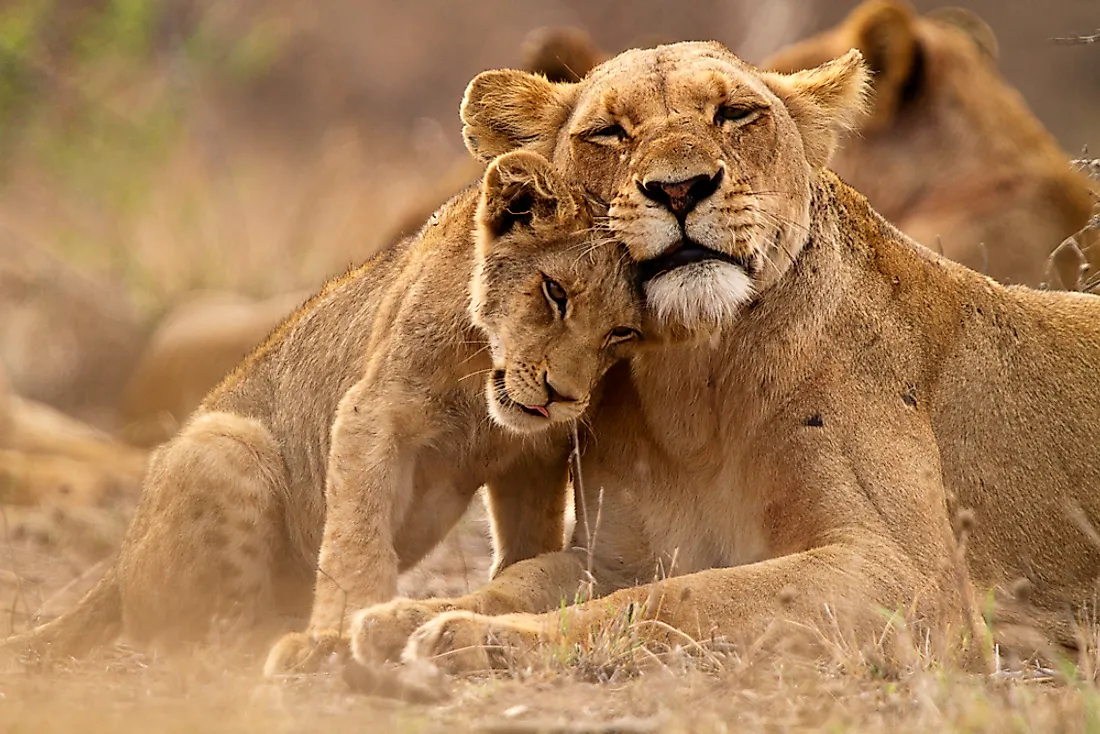Characteristics of Mammals

About 5,000 species of animals are classified as mammals. Animals are classified by their characteristics and traits, although some of these traits might be shared among species. There are only three characteristics that are unique to mammals: the presence of hair in their bodies, three middle ear bones, and mammary glands. Other characteristics of mammals are also found in other animals such as the reptiles, fish, insects, and birds.
Sweat Glands
Mammals are warm-blooded animals meaning that they possess an internal body temperature control mechanism. Sweat glands make this possible. These glands release a colorless liquid that evaporates on the surface of the skin and allows access heat to escape the body. There are two types of sweat glands; apocrine which is mainly found in hairy animals and eccrine glands that is common in less hairy mammals. Apocrine glands produce scented secretions than the eccrine glands which are found in more advanced mammals such as man, chimpanzees, and gorillas.
Jaw Joint
Mammals have a single lower jawbone that attaches directly to the skull. The dentary bone holds the teeth of the lower jaw in place. Other species of vertebrates have more than one bone in the lower jaw that and not attached directly to the skull. The dentary lower jawbone articulates with the squamosal bone of the upper jaw. The two jaws are connected to the skull by muscles through a coronoid process that aids in chewing. The joint allows mammals to move the jaw easily and chew effectively with less energy spent in the process.
Live Young (except monotremes)
Mammals generally give birth to living young ones except for the two species of monotremes, which are the echidna, and the duck-billed platypus. After giving birth, mammals nurse their young ones with milk secreted by the mammary glands. Mammary glands are present in both male and female in most mammalian species, but they are more developed in females. The rule is, however, an exception in the male Dayak fruit bat, which is a mammalian male that produces milk. Mammals take care of the young ones after giving birth until they are old enough to take care of themselves. Even though monotremes lay eggs, they have mammary glands that produce milk for the young ones after they hatch.
Tooth Replacement
Mammals are diphyodont, meaning that they can only replace teeth once. However, this is a characteristic that is not unique to mammals only. The teeth (deciduous teeth) of young mammals are weaker and smaller. The teeth gradually falls off the young one grows older and are replaced by larger and more permanent teeth. If a mammal loses the permanent teeth, then it cannot be naturally be replaced unless through a dental procedure. Some species of non-mammalian animals such as sharks replace their teeth throughout their lifetime.
Fur and Hair
All mammals grow at least some form of hair in parts of their bodies in at least one of the stages of life. Mammalian hair assumes different forms including whiskers, thick fur, and quills. Hair is vital to mammals because it protects the delicate skin from external damage and it also offers camouflage and acts as sensory receptors. Hair is also essential in metabolism and temperature regulation because it allows the body to preserve or release heat. Aquatic mammals such as dolphins and whales have hair during the early stages of development, some of these animals retain patches of hair on the upper lips and in the chins while some do not.
Two Knobs at Base of Skull
Mammals have two bony knobs at the base of the skull known as the occipital condyles. The two knobs fit into the bones of the neck. The occipital condyles allow mammals to hold the heavy skulls in place and move the head sideways without breaking their neck. Other species of animals such as reptiles and fish have a single occipital condyle that limits the movement of the heads.
Vertebrates
Vertebrates are animals with a backbone. This is a trait found but not limited to mammals. Reptiles, amphibians, fish, and birds are also vertebrates. Vertebrates have an endoskeleton that allows for the attachment of muscles, flesh, and ligaments. The endoskeleton also protects the vital organs of mammals such as the heart, kidneys, and lungs. The essential bones in mammals are attached to the backbone. If an infection compromises the spine or if it breaks then the animal loses the ability to locomote or stand appropriately.











